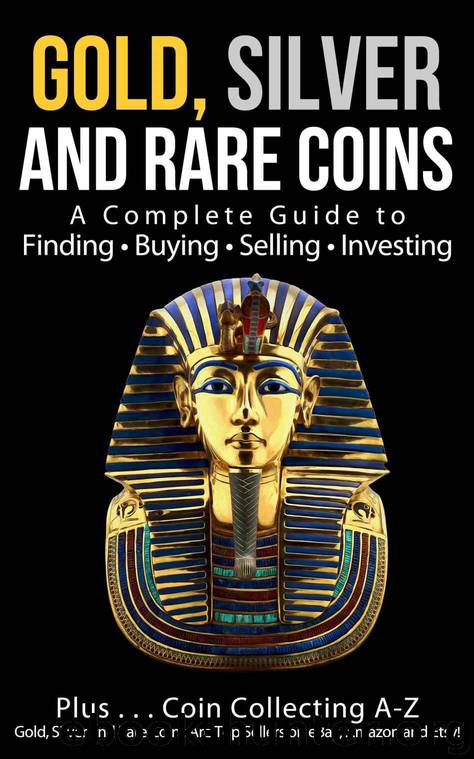Gold, Silver and Rare Coins: A Complete Guide To Finding Buying Selling Investing: Plus...Coin Collecting A-Z: Gold, Silver and Rare Coins Are Top Sellers on eBay, Amazon and Etsy by Sommer Sam & Sommer Sasha

Author:Sommer, Sam & Sommer, Sasha [Sommer, Sam]
Language: eng
Format: epub
Published: 2014-10-12T21:00:00+00:00
The # 1 rated Gold ETF Fund on the previous page is iShares (IAU). So in order to find out why, let’s look at the criteria used to evaluate and rank these funds. The graph below shows the five year performance and it is up from 2010. The price per share is $12.23. It is rated on the best fit scoreboard below. The fund description is also listed below. The criteria used to identify best fit funds is shown on the next page.
“Best Fit funds are ranked by an overall score calculated from four component measures: a fund’s expense ratio, tracking error, bid/ask ratio, and diversification. For each component measure, funds receive a score between 0 and 100, based on their
performance on that measure in comparison to other funds. The top-scoring fund within a given measure (lowest expense ratio, for example) receives a score of 100 for that measure. The four component scores are then weighted (see below) to create an overall score. The overall score defines a fund’s rank within its category.
Components measures and their weightings:
• Expense Ratio (30%)
• Tracking Error (30%)
• Bid/Ask Ratio (20%)
• Diversification (20%)
Funds without data for the components outlined above are excluded from ranking.
About the Component Measures
1. Expense Ratio
What is it? Expense ratio is the percentage of fund assets a fund manager may withdraw each year to pay for operating expenses.
Why is it important? Lower expense ratios mean better returns for comparable ETFs. How is it measured? Data is for a fund’s total annual expense ratio.
2. Tracking Error
What is it? Tracking error is a measure of the volatility of excess returns relative to a benchmark. Excess returns are the investment’s return in excess of its primary benchmark, which is based on a broad asset class. The tracking error is calculated for the past six-month period. Benchmark indices are provided by Morningstar.
Why is it important? Tracking error tells investors whether the ETF they’ve purchased is actually following the performance of its underlying index.
How is it measured? Tracking error is calculated by a linear regression of the ETF’s daily net asset value returns on the underlying index’s daily total returns for the past six months.
3. Bid/Ask Ratio
What is it? The bid/ask ratio measures the spreads between bid and ask prices among various ETFs. It is calculated by dividing the bid price minus the ask price (the “spread”) for a fund by the mid price between the bid and ask prices.
Why is it important? Bid/ask spreads can measure “hidden” transaction costs for an ETF, as well as liquidity (higher bid-ask spreads imply lower liquidity).
How is it measured? The bid/ask measure is calculated daily and based on a 30-day average of closing bid/ask spreads. Narrower spreads receive higher scores.
4. Diversification
What is it? Diversification in a fund is determined by two variables: the relative weight of the 10 largest holdings in a fund and the fund’s turnover ratio, which is the rate at which a fund replaces its holdings on an annual basis.
Why is it important? A greater diversity of
Download
This site does not store any files on its server. We only index and link to content provided by other sites. Please contact the content providers to delete copyright contents if any and email us, we'll remove relevant links or contents immediately.
How to Be a Bawse: A Guide to Conquering Life by Lilly Singh(7394)
Spare by Prince Harry The Duke of Sussex(5077)
Millionaire: The Philanderer, Gambler, and Duelist Who Invented Modern Finance by Janet Gleeson(4386)
Machine Learning at Scale with H2O by Gregory Keys | David Whiting(4195)
Never by Ken Follett(3799)
Harry Potter 02 & The Chamber Of Secrets (Illustrated) by J.K. Rowling(3625)
The Heroin Diaries by Nikki Sixx(3497)
Urban Outlaw by Magnus Walker(3342)
Harry Potter and the Prisoner of Azkaban (Book 3) by J. K. Rowling(3304)
Fairy Tale by Stephen King(3223)
Japanese Design by Patricia J. Graham(3112)
The Man Who Died Twice by Richard Osman(2998)
The Club by A.L. Brooks(2863)
Stacked Decks by The Rotenberg Collection(2812)
Will by Will Smith(2795)
Harry Potter and the Deathly Hallows (7) by J.K. Rowling(2647)
Churchill by Paul Johnson(2510)
The Chimp Paradox by Peters Dr Steve(2302)
Borders by unknow(2232)
